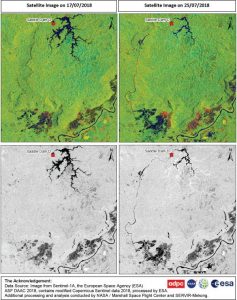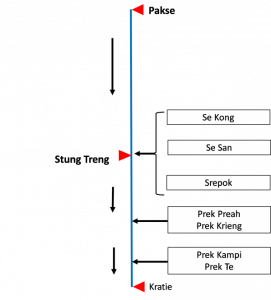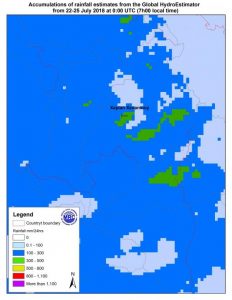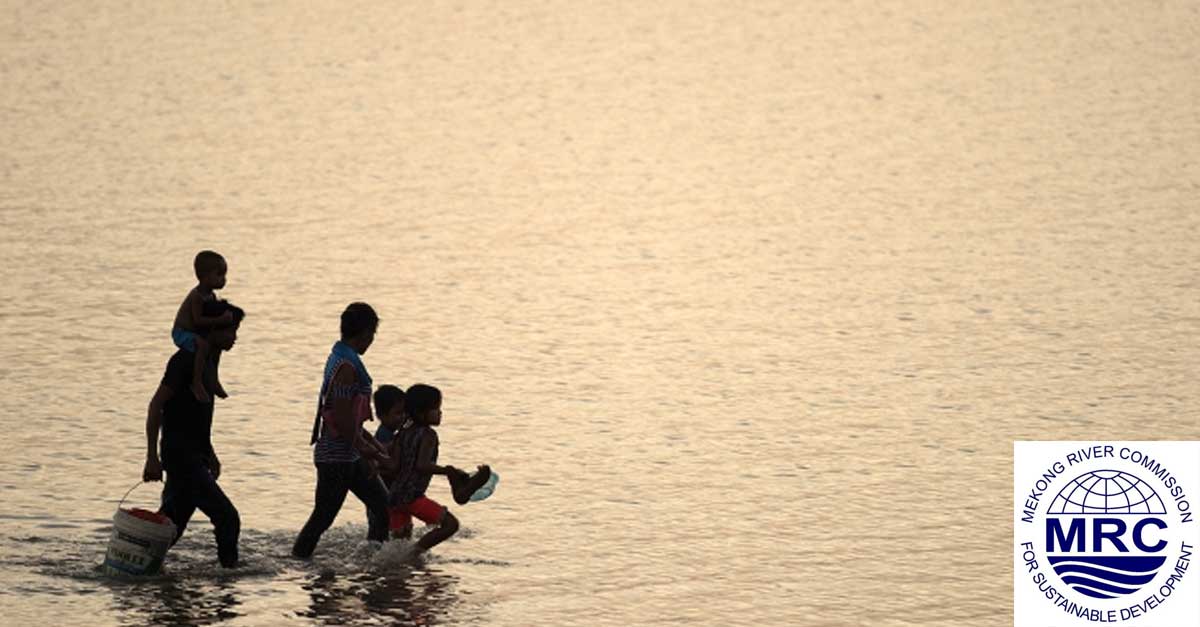Reports by the Mekong River Commission (MRC) show that the floodwaters from the Lao dam collapse didn’t have a major effect upon Cambodia when compared to ordinary rainfall. Initial and preliminary analysis for the extent of the water level rise in Stung Treng due to the dam break shows about 20cm compared to normal condition.
On the 23rd of July, Saddle dam D, one of the five auxiliary dams of the Xe-Pian Xe-Nam Noy Hydropower project in Attapeu Province of Laos, breached its banks and heavy amounts of water flooded several villages along the Xe-Pian River (5 km from the dam), a tributary of the Se Kong River, which flows into the Mekong mainstream. The distance from the dam to the confluence of the Se Kong and the Mekong is about 283 km. Located right below the confluence is Stung Treng in Cambodia with Kratie about 124 km further down. The flood damage to lives and livelihoods in Laos itself have been widely reported. In addition, it was also reported that communities in Stung Treng were evacuated due to the flooding situation.
What was the extent of the flooded areas? What was the extent of the water rise in Cambodia because of dam break on top of other factors? As previously reported, MRC monitoring shows significant rainfall and water rises throughout the Mekong basin.
Extent of flooding
The MRC, working alongside partners, shows below the possible flood maps created through the analysis of data using Synthetic Aperture Radar (SAR) satellite imagery. The image shows inundated areas caused by the collapsed saddle dam and flooded villages downstream as of 25 July 2018. SAR, attached to PALSAR-2 aboard the ALOS-2, emits microwave and receives reflections from the ground to acquire information and use be used during both daytime and nighttime.


Partners supporting the analysis include the Center for Research and Application for Satellite Remote Sensing of Yamaguchi University in Japan, Asian Disaster Preparedness Center (ADPC), the Japan Aerospace Exploration Agency (JAXA), the European Space Agency (ESA), the U.S. National Aeronautics and Space Administration (NASA) Marshall Space Flight Center, and Sentinel Asia network. Yamaguchi University and ADPC provided maps of the possible flooded areas through remote sensing technology by digital image processing of the Synthetic Aperture Radar from ALOS-2.
Remote Sensing Technology can be used to strengthen the decision support system to member countries in preparing for possible disasters and allocating relief supplies to assist in the emergency evacuation with recovery efforts.
Extent of water level rise
According to MRC monitoring station in Siem Pang district (Stung Treng in Cambodia) on the Se Kong River – with the observed water level recorded automatically in 15-min intervals – there was an increase by approximately more than 4 meters from 8.39m at 3:15pm on 22 July to 12.47m at 2:00pm on 27 July 2018. It is caused by heavy rains and then later by large amount of water released from Saddle Dam D.
Initial and preliminary analysis for the extent of the water level rise in Stung Treng due to the dam break shows about 20cm compared to normal condition. Why?
The flows at Stung Treng are dominated by:
-
- The inflows from upstream of the Mekong River from Pakse
- The inflows from the 3S area of Se Kong, Sesan and Srepok Rivers and
- The catchment rainfall
The influent flows at Stung Treng and Kratie:

Since the Stung Treng Station is nominated by the Mekong inflow upstream, the direct inflow from Paske has strong connection with its downstream part. If normal condition flow at Stung Treng was based on the actual flows at Pakse, the correlation between Pakse and Stung Treng was developed, and the increased volume during the dam break (critical condition) was calculated based on this correlation.
The water level of normal and critical conditions at Stung Treng from 24th to 27th July are shown in Table 1. Table 2 shows the increased water volume at the same period.
Table 1. The water level of normal and critical condition at Stung Treng
|
Date |
St-Treng (Normal) |
Obs.St- Treng (Critical) |
|
24/07/2018 |
9.23 |
9.25 |
|
25/07/2018 |
9.43 |
9.61 |
|
26/07/2018 |
9.78 |
9.82 |
|
27/07/2018 |
9.91 |
10.11 |
Table 2. The increased water volume of the critical condition at Stung Treng
|
Date |
Vstr-normal (V1) |
Vstr-Critical (V2) |
Vstr-Forcast (Vf) |
Increased (V2-V1) (km3) |
Increased V-forecast (V2-Vf) |
Increased V- |
|
24/07/2018 |
4.52 |
4.53 |
4.36 |
0.01 |
0.17 |
12,797,182 |
|
25/07/2018 |
4.63 |
4.74 |
4.41 |
0.11 |
0.33 |
105,358,077 |
|
26/07/2018 |
4.84 |
4.86 |
4.72 |
0.02 |
0.14 |
21,091,384 |
|
27/07/2018 |
4.92 |
5.04 |
4.68 |
0.12 |
0.35 |
119,598,556 |
With these results, it is noted that:
-
- The amount of water from dam break passed through Stung Treng Station till 27 July was about (+/-) 270 million m3.
- The increasing water level caused by dam break was about 20 cm compared with normal condition.





